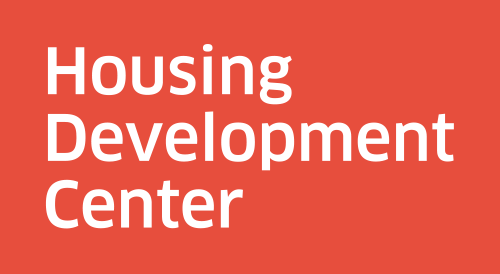Message From Traci: Rural housing providers stretch farther—and cooperate creatively—to serve vulnerable residents.
The Gloria Center, developed by Mid-Columbia Community Action Council in the Dalles, is a social-service hub for Wasco, Hood River, and Sherman counties.
It may seem as if it should be cheaper and easier to develop and operate affordable housing in rural areas compared to in urban areas. But it’s not that simple.
Horizon Project was founded to serve the needs of adults experiencing intellectual and developmental disabilities (I/DD). The Umatilla County nonprofit provides residential, employment, and community living supports for adults with I/DD living in Milton-Freewater, Hermiston, Pendleton, and surrounding areas.
Most of Horizon Project’s residential properties are small apartment complexes and group homes. But the organization stepped up to create and operate its largest integrated housing community yet, when the City of Pendleton asked it to partner on the development of South Hill Commons. The new apartment complex, which opened to residents this year, contains several units that are rented with a preference for people living with I/DD. These units are integrated within 70 units that largely serve working families—in an area where newer, high-quality, affordable housing is in short supply.
“In rural areas, everyone has to play multiple roles,” explains Terri Silvis, Horizon Project’s chief executive officer/chief development officer.
Rural organizations like Horizon Project must overcome special challenges, too, when they develop affordable housing. Silvis, who brings extensive experience developing affordable housing in both rural and urban communities, describes some of those challenges.
The South Hill Commons development team had to bring in construction contractors that were based hundreds of miles away to supplement the local pool of firms. Though local subs had the right expertise for the bidded work, many were short on labor capacity. “In rural areas there simply are not enough contractors to meet the general construction demand, and that drives up costs across the system,” Silvis says.
Furthermore, the general contractor had to ship building materials from distant distribution centers, adding cost to the project budget. And before construction could commence, Silvis and her finance team had to convince funding partners that Pendleton needed workforce housing despite its slow population growth.
“Rural areas get stuck,” Silvis explains. “Our economic development goals are stymied because we can’t attract the workforce. But we need good-quality affordable housing to attract workers.”
At HDC, we hear many of our rural clients echo Silvis’s observations. Rural areas have fewer and often smaller organizations to provide the housing and services that their communities need. These organizations must stretch farther to fulfill their missions as service providers, housing developers, and housing owners. But we see our rural partners rise to these challenges in remarkable ways. They engage in creative partnerships, embrace different roles, and overcome the special obstacles that arise because they operate at a distance from population and industrial centers.
Incomes in rural areas are typically lower than in urban areas, which complicates the problem of financing debt for rural projects. Yet this year, Northwest Coastal Housing opened the Blackberry Hill Apartments, which provides deeply affordable homes to low-income veterans in Toledo.
The often-large physical distance between needed services creates a travel burden for rural residents and their service providers. But Columbia Cascade Housing Corporation oversees properties that are 90 miles apart; and Mid-Columbia Community Action Council overcame the distance barrier by creating The Gloria Center, a climate-resilient social-service hub serving Wasco, Hood River, and Sherman counties.
Climate change impacts rural areas in specific ways—and in Mill City, Marion County Housing Authority is addressing those impacts, expanding its affordable housing portfolio in an area that experienced massive housing losses because of wildfires.
Qualified property management is in scarce supply. So, Farmworker Housing Development Corporation created its own property management company, which functions as a workforce development program, too.
HDC is privileged to work with each of these rural organizations as a development consultant, asset management consultant, or both. We continuously take away learnings from our rural partners about how to assemble the many puzzle pieces it takes to create affordable homes and a better future for our region’s most vulnerable community members.
Silvis emphasizes that when the pieces come together, it’s because everyone pitches in. Her valued partners include local government agencies. Though they may not have large funding streams to help make development budgets balance, they show steadfast commitment to achieving “a common shared goal.”
Silvis adds with a laugh, “If I develop a project, I know that the mayor or county commissioner, when they drive by the property, will pick up the phone and tell me if they don’t like what they see. There is a great personal and professional connectedness to the projects we develop here.”

